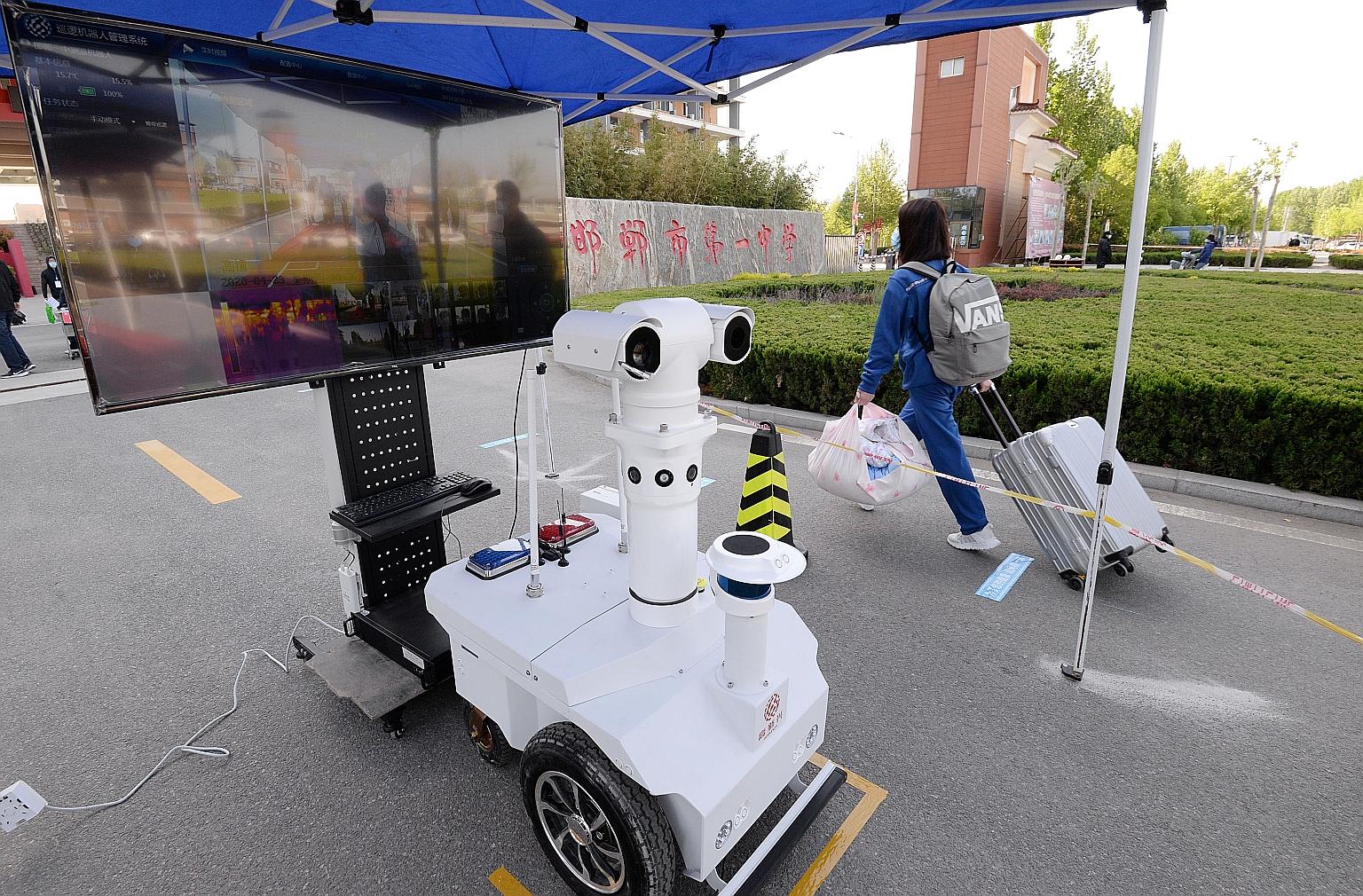Coronavirus pandemic
Beijing schools partially reopen today
Final-year senior high students sitting vital exam go back to class - under strict anti-virus measures
Sign up now: Get insights on Asia's fast-moving developments

A student in Handan, China's Hebei province, walking past a robot that takes body temperature at the school entrance last week. Schools in Beijing reopen their doors to final-year senior high students today. The students must have their faces scanned and produce a mobile health code before they can enter the school compound.
PHOTO: REUTERS
Tan Dawn Wei China Bureau Chief In Beijing, Tan Dawn Wei
Follow topic:
When Cao Fuhang returns to school today, the Beijing resident will first need to have his face scanned by a facial recognition software, then produce his mobile health code before he is allowed to enter the compound.
While in school, the senior high student has to wear a face mask at all times, except during meals which will be delivered to students in the classrooms in lunch boxes.
Meanwhile, he has prepared his own set of cutlery and will carry drinking water to school every day, instead of using a water dispenser there. He also has in his backpack a bottle of hand sanitiser and some small garbage bags.
After three months of online lessons at home, when the country's education ministry ordered schools shut because of the coronavirus pandemic, the 17-year-old is anxious to get back into the classroom so that he can ramp up preparations for the gaokao, or the crucial national higher education entrance examination, in July.
"I want to go back to school, because the learning atmosphere will be better," said the teenager, who will be among 50,000 students to return to classrooms today in Beijing. "There's a novelty to the new school arrangement... (so) it may take time to get used to it."
As schools reopen their doors to final-year senior high students across Beijing, teachers and administrators are keeping up with strict anti-coronavirus practices.
Classes are capped at 25 students, while students will take turns to eat in the canteen. Some will eat in the classrooms.
"The most critical thing is keeping the students safely apart," said language teacher Liu Miao, 45, who, with all other teachers, was made to test for the virus last week. She tested negative.
Some classes have been split in two, with one group in class with the teacher and the other participate via video-conferencing app Tencent Meeting in another room. The two groups rotate every week.
Teachers have to follow a protocol when a student is ill by alerting the school clinic and the student's parents, moving the other students to quarantine sites on campus while the sick student is tested.
Beijing, Shanghai and Guangdong are among the last of China's cities and provinces to allow schools to resume. Even then, it is only a partial move to let final-year junior and senior high students who have to sit their entrance exams this year, to return to campus.
The first province to let schools reopen was Qinghai in the remote north-west of China which started its new semester on March 9. Qinghai recorded a low number of infections, with only 18 cases up until it reopened schools.
Hubei province, the epicentre of the coronavirus outbreak, announced that final-year high school students can return to their classrooms from May 6.
-
25
Cap on the number of students in classes. Students will take turns to eat in the canteen. Some will eat in the classrooms.
The Education Ministry began ordering schools to shut from Jan 20, just days before the lockdown in Wuhan. Tuition centres and day care facilities also had to close.
Classes moved online, including for foreign students who could not return to China. But those in rural or under-developed areas did not have the same access as their urban peers, prompting the Education Ministry to postpone the gaokao by a month to July 7, in fairness to these less well-resourced students.
An estimated 10 million students will take this year's gaokao.
Ms Liu acknowledged that the three-month-long online learning would have hampered some students' progress.
"For the very motivated ones, this three-month break is not a bad thing as they know how to organise their own time. But some other students need teachers to be by their side to monitor them and if they have no supervision at home, they will definitely fall behind," she said.

